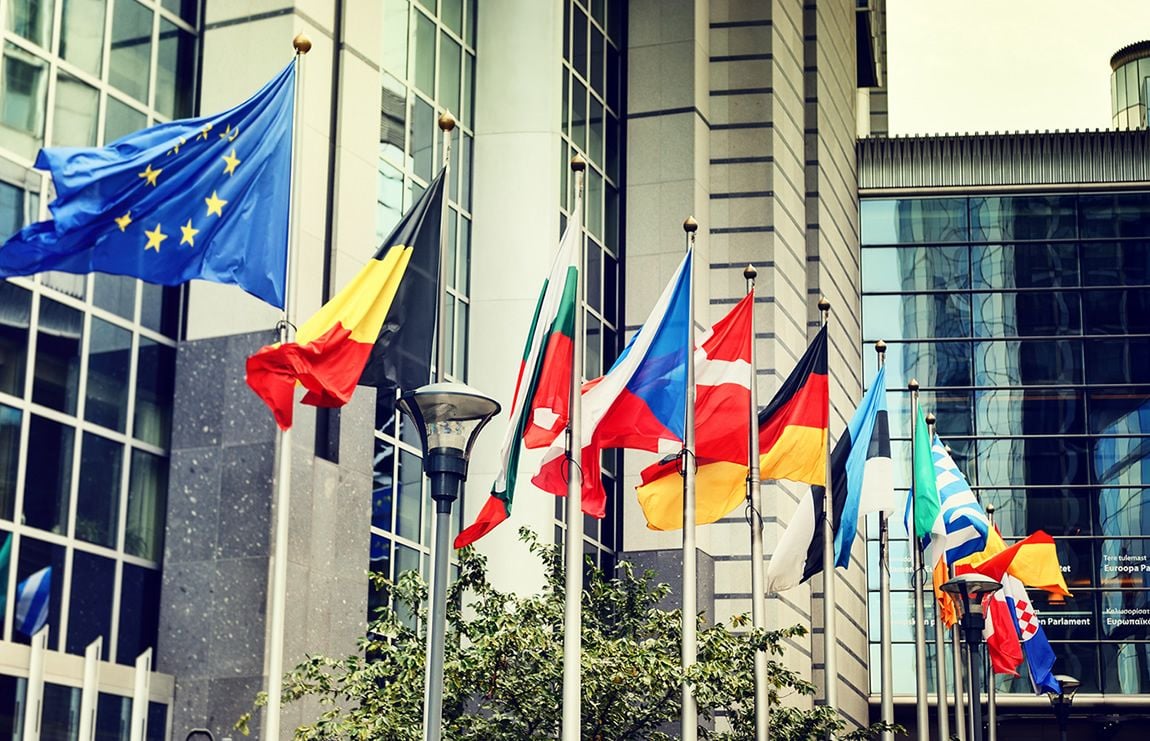Eurozone Inflation Drops to One Year Low due to Energy and Food Price Changes
- Written by: James Skinner
-

© Grecaud Paul, Adobe Stock
Inflation is substantially below the ECB's 2% target and, while the core measure was static in February, the headline number is still moving in the wrong direction.
Eurozone inflation fell to a fresh one year low in February, according to Eurostat data released Wednesday, thanks largely to a reduction in food and energy price inflation.
Headline inflation dropped from 1.3% in January, to 1.2% in February, its lowest level since January 2017. Core inflation, which removes volatile food and energy prices from the goods basket and so is seen as a better reflection of true domestic inflation pressures, remained static at 1% during the current month.
Both numbers are substantially below the European Central Bank 2% target and, while the all-important core measure was static in February, the headline number has been moving in the wrong direction since September 2017.
“February’s decline in headline inflation does not change our view that the ECB will drop the easing bias in its forward guidance at its meeting on 8th March,” says Jack Allen, a European economist at Capital Economics.
“Looking ahead, the rise in oil prices since last summer should push the headline inflation rate back above 1.5% by the summer. But our forecasts that oil prices will fall and the euro will strengthen suggest that energy inflation will fall back quickly after that before turning negative in 2019.”
Many European countries are net importers of energy and so changes in oil and gas prices can have a considerable influence on inflation. When they rise, it can push inflation higher, when they fall it can push inflation lower.
Equally, changes in the value of a currency can also make energy imports more costly or less expensive, thereby influencing inflation. Energy is priced in US Dollars and the Euro has risen by 16.4% against the Dollar in the last 12 months.
All of that said, there could be hope on the horizon for those seeking a boost to Eurozone inflation, at least as far as the headline number goes anyhow.
Prices of Brent crude, the European oil benchmark, have risen 17.4% in the last 12 months but are down by around 5.6% for the February month. ICE natural gas futures prices are still up by 6.2% on a 12 month basis, although they have shed 16.2% since start of 2018.
“We think that the Bank will continue to move towards normalising monetary policy very slowly. We expect it to end its asset purchases in December, before waiting until September 2019 to raise interest rates,” says Allen.
Higher inflation is important because the European Central Bank can only complete the normalisation of its monetary policy if consumer prices show signs of a sustainable return toward the 2% target.
Normalising monetary policy is essential if the Euro is to reverse its undervaluation against other currencies. After all, markets will only sustain a bid for the single currency if there is some hope the central bank will eventually stop compressing bond yields and one day, raise its base rate.
Quantitative easing compresses market interest rates (bond yields) which, in theory, lowers borrowing costs for businesses and households in the real economy. It is thought that lower borrowing costs incentivises investment and spending which, in turn, stimulates economic growth and inflation.
The ECB announced the first meaningful reduction to its intervention in bond markets back in October, taking effect in January, when it cut the amount of its monthly bond purchases to €30 billion.
The central bank had been buying €60 billion of government and corporate bonds per month ever since early 2015. It says the reduced rate of bond buying will continue until “September 2018 or beyond.”
The ECB has gone further with its own extraordinary monetary policy than any of the Western world’s other central banks, injecting new money equivalent to 40% of Eurozone GDP into the financial system over the last two years.
This is nearly twice what the Federal Reserve did during its own quantitative easing years and the US central bank, despite having two full years of so called “normalisation” under its belt, is yet to actually shrink its balance sheet.
The scale of the ECB’s balance sheet combined with the length of time that has elapsed without the Federal Reserve being able to lighten its own load highlights and underlines the gargantuan task ahead of Mario Draghi and the governing council.
Advertisement
Get up to 5% more foreign exchange by using a specialist provider to get closer to the real market rate and avoid the gaping spreads charged by your bank when providing currency. Learn more here.




